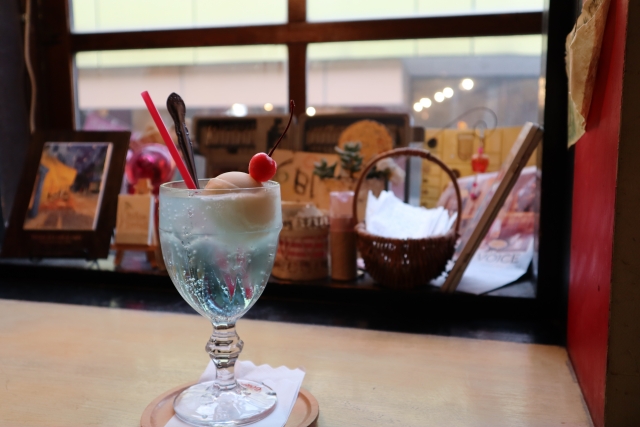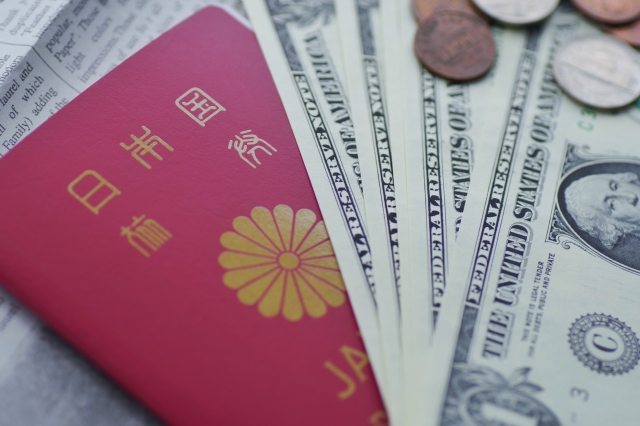日本には多くの有名なスキー場があり、雪質の良さや設備の充実度で国内外から多くのスキーヤーやスノーボーダーを惹きつけています。以下に、日本で特に有名なスキー場を地域別で紹介します。
北海道
1. ニセコユナイテッド(北海道虻田郡倶知安町)
- 特徴: 世界的に有名なパウダースノー。外国人観光客にも人気で、リゾート全体が国際的。
- 魅力: 温泉、ナイトスキー、豊富なアクティビティ。
2. ルスツリゾート(北海道留寿都村)
- 特徴: 3つの山に広がるコース。家族連れや初心者にも最適。
- 魅力: 豊富なリゾート施設、アミューズメントパーク付き。
3. 富良野スキー場(北海道富良野市)
- 特徴: 見晴らしの良いロングコースとパウダースノー。
- 魅力: ドラマ「北の国から」の舞台としても有名。
東北地方
1. 安比高原スキー場(岩手県八幡平市)
- 特徴: 粉雪と広いゲレンデ。質の高い雪と整備されたコースで有名。
- 魅力: 初心者から上級者まで楽しめる多彩なコース。
2. 蔵王温泉スキー場(山形県山形市)
- 特徴: 樹氷(スノーモンスター)で有名。
- 魅力: スキーと温泉が同時に楽しめる。
3. 八甲田スキー場(青森県青森市)
- 特徴: 豪雪地帯ならではの深いパウダー。
- 魅力: 上級者向けのバックカントリーエリアが人気。
関東・甲信越地方
1. 白馬八方尾根スキー場(長野県白馬村)
- 特徴: 1998年の長野冬季オリンピックの舞台。変化に富んだコース。
- 魅力: 山々の絶景と国際色豊かなエリア。
2. 志賀高原スキー場(長野県山ノ内町)
- 特徴: 日本最大級のスキー場。18のスキー場が結合。
- 魅力: 標高が高く、雪質が非常に良い。
3. 苗場スキー場(新潟県湯沢町)
- 特徴: 世界最大級のゴンドラ「ドラゴンドラ」で他エリアと連結。
- 魅力: 首都圏からのアクセスが良好。広大なスキーリゾート。
4. 軽井沢プリンスホテルスキー場(長野県軽井沢町)
- 特徴: シーズンの早い時期から滑走可能。家族向け。
- 魅力: ショッピングモールと温泉が近く、観光も楽しめる。
中部地方
1. 野沢温泉スキー場(長野県野沢温泉村)
- 特徴: 歴史ある温泉街と一体化したスキー場。
- 魅力: 多彩なコースと地元の温泉。
2. 高鷲スノーパーク(岐阜県郡上市)
- 特徴: 西日本最大級のスキー場。
- 魅力: 名古屋や関西圏からのアクセスが良い。
関西・中国・四国地方
1. びわ湖バレイスキー場(滋賀県大津市)
- 特徴: 琵琶湖を見下ろす絶景が楽しめる。
- 魅力: 初心者にもやさしいコースも充実。
2. 芸北国際スキー場(広島県北広島町)
- 特徴: 西日本最大級の規模。
- 魅力: 積雪量が豊富で、初心者から上級者まで楽しめる。
九州
1. 五ヶ瀬ハイランドスキー場(宮崎県五ヶ瀬町)
- 特徴: 九州唯一のスキー場。
- 魅力: 温暖な九州でスキーが楽しめる希少なスポット。
これらのスキー場は、それぞれ独自の魅力と特色があり、目的やスキルレベルに応じて選べます。ぜひ計画にお役立てください!
北海道
1. ニセコユナイテッド(北海道虻田郡倶知安町)
- 特徴: 世界的に有名なパウダースノー。外国人観光客にも人気で、リゾート全体が国際的。
- 魅力: 温泉、ナイトスキー、豊富なアクティビティ。
2. ルスツリゾート(北海道留寿都村)
- 特徴: 3つの山に広がるコース。家族連れや初心者にも最適。
- 魅力: 豊富なリゾート施設、アミューズメントパーク付き。
3. 富良野スキー場(北海道富良野市)
- 特徴: 見晴らしの良いロングコースとパウダースノー。
- 魅力: ドラマ「北の国から」の舞台としても有名。
東北地方
1. 安比高原スキー場(岩手県八幡平市)
- 特徴: 粉雪と広いゲレンデ。質の高い雪と整備されたコースで有名。
- 魅力: 初心者から上級者まで楽しめる多彩なコース。
2. 蔵王温泉スキー場(山形県山形市)
- 特徴: 樹氷(スノーモンスター)で有名。
- 魅力: スキーと温泉が同時に楽しめる。
3. 八甲田スキー場(青森県青森市)
- 特徴: 豪雪地帯ならではの深いパウダー。
- 魅力: 上級者向けのバックカントリーエリアが人気。
関東・甲信越地方
1. 白馬八方尾根スキー場(長野県白馬村)
- 特徴: 1998年の長野冬季オリンピックの舞台。変化に富んだコース。
- 魅力: 山々の絶景と国際色豊かなエリア。
2. 志賀高原スキー場(長野県山ノ内町)
- 特徴: 日本最大級のスキー場。18のスキー場が結合。
- 魅力: 標高が高く、雪質が非常に良い。
3. 苗場スキー場(新潟県湯沢町)
- 特徴: 世界最大級のゴンドラ「ドラゴンドラ」で他エリアと連結。
- 魅力: 首都圏からのアクセスが良好。広大なスキーリゾート。
4. 軽井沢プリンスホテルスキー場(長野県軽井沢町)
- 特徴: シーズンの早い時期から滑走可能。家族向け。
- 魅力: ショッピングモールと温泉が近く、観光も楽しめる。
中部地方
1. 野沢温泉スキー場(長野県野沢温泉村)
- 特徴: 歴史ある温泉街と一体化したスキー場。
- 魅力: 多彩なコースと地元の温泉。
2. 高鷲スノーパーク(岐阜県郡上市)
- 特徴: 西日本最大級のスキー場。
- 魅力: 名古屋や関西圏からのアクセスが良い。
関西・中国・四国地方
1. びわ湖バレイスキー場(滋賀県大津市)
- 特徴: 琵琶湖を見下ろす絶景が楽しめる。
- 魅力: 初心者にもやさしいコースも充実。
2. 芸北国際スキー場(広島県北広島町)
- 特徴: 西日本最大級の規模。
- 魅力: 積雪量が豊富で、初心者から上級者まで楽しめる。
九州
1. 五ヶ瀬ハイランドスキー場(宮崎県五ヶ瀬町)
- 特徴: 九州唯一のスキー場。
- 魅力: 温暖な九州でスキーが楽しめる希少なスポット。
これらのスキー場は、それぞれ独自の魅力と特色があり、目的やスキルレベルに応じて選べます。ぜひ計画にお役立てください!
Let's Go Skiing!
Many famous ski resorts in Japan attract many skiers and snowboards from Japan and abroad with their excellent snow quality and facilities. Below are some of the most renowned ski resorts in Japan by region:
Hokkaido
1. Niseko United (Kutchan, Abuta-gun, Hokkaido)
- Features: World-famous powder snow, popular with foreign tourists, and an international resort.
- Attractions: Hot springs, night skiing, and various activities.
1. Niseko United (Kutchan, Abuta-gun, Hokkaido)
- Features: World-famous powder snow, popular with foreign tourists, and an international resort.
- Attractions: Hot springs, night skiing, and various activities.
2. Rusutsu Resort (Rusutsu Village, Hokkaido)
- Features: Courses spread over three mountains and ideal for families and beginners.
- Attractions: Abundant resort facilities and an amusement park.
- Features: Courses spread over three mountains and ideal for families and beginners.
- Attractions: Abundant resort facilities and an amusement park.
3. Furano Ski Resort (Furano City, Hokkaido)
- Features: Long courses with great views and powder snow.
- Attraction: Famous as the setting for the TV drama “Kita no Kuni Kara” (From the North).
- Features: Long courses with great views and powder snow.
- Attraction: Famous as the setting for the TV drama “Kita no Kuni Kara” (From the North).
Tohoku Region
1. Appi Kogen Ski Resort (Hachimantai City, Iwate Prefecture)
- Features: Powder snow and wide slopes. Famous for its high-quality snow and well-maintained courses.
- Attractions: Beginners and advanced skiers alike can enjoy various courses.
1. Appi Kogen Ski Resort (Hachimantai City, Iwate Prefecture)
- Features: Powder snow and wide slopes. Famous for its high-quality snow and well-maintained courses.
- Attractions: Beginners and advanced skiers alike can enjoy various courses.
2. Zao Onsen Ski Resort (Yamagata City, Yamagata Prefecture)
- Features: Famous for its snow monsters.
- Attractions: You can enjoy skiing and hot springs at the same time.
- Features: Famous for its snow monsters.
- Attractions: You can enjoy skiing and hot springs at the same time.
3. Hakkoda Ski Resort (Aomori City, Aomori Prefecture)
- Features: Deep powder in an area with heavy snowfall.
- Attractions: The backcountry area is popular for advanced skiers.
- Features: Deep powder in an area with heavy snowfall.
- Attractions: The backcountry area is popular for advanced skiers.
Kanto/Koshinetsu Region
1. Hakuba Happo One Ski Resort (Hakuba Village, Nagano Prefecture)
- Features: The site of the 1998 Nagano Winter Olympics. The course is rich in variety.
- Attractions: Spectacular mountain views and international flavor.
1. Hakuba Happo One Ski Resort (Hakuba Village, Nagano Prefecture)
- Features: The site of the 1998 Nagano Winter Olympics. The course is rich in variety.
- Attractions: Spectacular mountain views and international flavor.
2. Shiga Kogen Ski Resort (Yamanouchi, Nagano Prefecture)
- Features: One of the largest ski resorts in Japan, with 18 ski slopes.
- Attractions: High elevation and superior snow quality.
- Features: One of the largest ski resorts in Japan, with 18 ski slopes.
- Attractions: High elevation and superior snow quality.
3. Naeba Ski Resort (Yuzawa, Niigata Prefecture)
- Features: Connected to other areas by one of the world's largest gondolas, the “Dragondola”.
- Attractions: Easy access from the Tokyo metropolitan area and a spacious ski resort.
- Features: Connected to other areas by one of the world's largest gondolas, the “Dragondola”.
- Attractions: Easy access from the Tokyo metropolitan area and a spacious ski resort.
4. Karuizawa Prince Hotel Ski Resort (Karuizawa, Nagano Prefecture)
- Features: People can ski here early in the season and the resort is very family-oriented.
- Attractions: Sightseeing with shopping malls and hot springs nearby.
- Features: People can ski here early in the season and the resort is very family-oriented.
- Attractions: Sightseeing with shopping malls and hot springs nearby.
Chubu Region
1. Nozawa Onsen Ski Resort (Nozawa Onsen Village, Nagano Prefecture)
- Features: A ski resort integrated with a historic hot spring resort town.
- Attractions: Various courses and local hot springs.
1. Nozawa Onsen Ski Resort (Nozawa Onsen Village, Nagano Prefecture)
- Features: A ski resort integrated with a historic hot spring resort town.
- Attractions: Various courses and local hot springs.
2. Takawashi Snow Park (Gujo City, Gifu Prefecture)
- Features: One of the largest ski resorts in western Japan.
- Attractions: Easy access from the Nagoya and Kansai areas.
- Features: One of the largest ski resorts in western Japan.
- Attractions: Easy access from the Nagoya and Kansai areas.
Kansai/Chugoku/Shikoku Region
1. Biwako Valley Ski Resort (Otsu City, Shiga Prefecture)
- Features: A spectacular view overlooking Lake Biwa.
- Attractions: Various courses that are easy for beginners.
1. Biwako Valley Ski Resort (Otsu City, Shiga Prefecture)
- Features: A spectacular view overlooking Lake Biwa.
- Attractions: Various courses that are easy for beginners.
2. Geihoku International Ski Resort (Kitahiroshima, Hiroshima Prefecture)
- Feature: One of the largest ski resorts in western Japan.
- Attractive: Abundant snowfall, suitable for both beginners and advanced skiers.
- Feature: One of the largest ski resorts in western Japan.
- Attractive: Abundant snowfall, suitable for both beginners and advanced skiers.
Kyushu
1. Gokase Highland Ski Resort (Gokase, Miyazaki Prefecture)
- Features: The only ski resort in Kyushu.
- Attraction: A rare spot to enjoy skiing in the warm Kyushu region.
1. Gokase Highland Ski Resort (Gokase, Miyazaki Prefecture)
- Features: The only ski resort in Kyushu.
- Attraction: A rare spot to enjoy skiing in the warm Kyushu region.
Each of these ski resorts has unique charm and features, and you can choose according to your objectives and skill level. We hope you will find them useful in your planning!
sign up for the Japanese-Online Newsletter
__..-・**・-..__..-・**・-.._ あいうえお かきくけこ さしすせそ たちつてと なにぬねの はひふへほ まみむめも やいゆえよ らりるれろ わゐうゑを ん __..-・**・-..__..-・**・-.._
#JapaneseOnline #LearningJapanese #FreeJapaneseLessons #JapaneseVideoLearning #JapaneseAnime #Anime #JapaneseFood #Bloguru











No Latest Comments